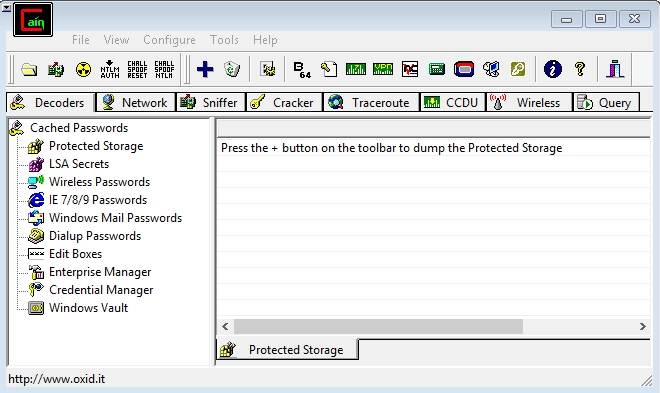How To Crack WPA/WPA2 With HashCat
Wpa Cracking Software For Windows
CoWPAtty is a free command line tool that automates the dictionary attack for WPA-PSK. It runs on Linux. It is an implementation of an offline dictionary attack against WPA/WPA2 networks using PSK-based authentication. CoWPAtty take 2 types of input to crack WPA-PSK i.e. Standard Wordlist; Pre-generated PMKs or Hash. Ideally, you should have a computer with a dedicated graphics processing unit (GPU) and up-to-date drivers. Hashcat works best with a dedicated GPU, but it isn’t strictly necessary for competitions such as National Cyber League (NCL). This also means that hashcat won’t perform well in most virtual machines, though there are exception.
The tutorial will illustrate how to install and configure HashCat on a Windows client and crack the captured PMKID or .hccap files using a wordlist dictionary attack.
“Hashcat is the self-proclaimed world’s fastest password recovery tool. It had a proprietary code base until 2015, but is now released as free software. Versions are available for Linux, OS X, and Windows and can come in CPU-based or GPU-based variants.”
The WPA2 handshake can be captured on a Linux compatible client like Kali Linux with a supported WiFi card running on VirtualBox. Then converted to the right format depending on the captured method and moved over to the Windows client to be cracked.
Use the guides Capturing WPA2 and Capturing WPA2 PMKID to capture the WPA2 handshake. For this test we will use the famous “Rockyou” wordlist.
Best Gpu For Wpa Cracking Free Download
DISCLAIMER: This software/tutorial is for educational purposes only. It should not be used for illegal activity. The author is not responsible for its use or the users action.
Step 1: Download HashCat
Hashcat do not require any installation, it is a portable program it requires you to unpack the downloaded archive.
- First you need to download Hashcat binaries from https://hashcat.net/hashcat/
- Navigate to the location where you saved the downloaded file, and unzip the file
Step 2: Download Wordlist
They are numerous wordlists out on the web, for this test we are going to use the famous “rockyou”.

- Open the hashcat folder on your harddrive and create a new folder called “wordlist”
- Download therockyou.txt wordlist from this Link.
- Save the downloaded file in the new folder“wordlist”
Step 3: Prepare Your Captured WPA2 Handshake
Depending on the method you used to capture the handshake you either must format the cap file to 2500 hash-mode or the PMKID file to hashcat 16800 hash-mode .
For how to format the files please see the guides Capturing WPA2 and Capturing WPA2 PMKID.
In this lab we are using a captured PMKID and a pcpa handshake formatted to hashcat readable format. “HonnyP01.hccapx ” and ” HonnyP02.16800″.
I’m using two different home routers from D-Link and Technicolor for this experiment, both WiFi routers are owed by me.
- The “HonnyP01.hccapx” file is captured from the D-Link router.
- The ” HonnyP02.16800″ file is captured from the Technicolor router.
Step 4: Start Hashcat
You need to run hashcat in CMD or PowerShell. In this example we will use CMD to execute our commands and crack the handshake.
Open CMD and navigate to the hashcat folder.
Type hashcat64 -h to display all options
Step 5: Crack WPA2
In the First example we will illustrate how to get the password from a converted pcap file “.hccapx”.
Copy your converted file to the hashcat folder, in this example i am copying the file HonnyP01.hccapx to my hashcat folder.
Next we will start hashcat and use the wordlist rockyou, type in the parameters below in CMD.

- hashcat64 the binary
- -m 2500 the format type
- -w 3 workload-profile 3
- HonnyP01.hccapx the formatted file
- “wordlistrockyou.txt” the path to the wordlist
Hashcat will start processing the file, if you are successful the terminal will display the hash and the password.
Here we can see that hashcat was able to match the hash to a password in the wordlist, in this lab the password to the D-Link WiFi is “password”. You can chose to let the application run trough the wordlist or press “q” to quit.
You can display the cracked password with the “show” command or by running the same command again, all cracked hashes will be stored in the “hashcat.potfile” in the hashcat folder.
To display the cracked password in CDM type the command bellow.
In the next example we will run the same command except now we use the 16800 mode to run the dictionary attack against formatted PMKID file captured from the Technicolor router.
- hashcat64 the binary
- -m 16800 the format type
- -w 3 workload-profile 3
- HonnyP02.16800 the formatted file
- “wordlistrockyou.txt” the path to the wordlist
Here we can see that the cracked password is “adsladsl” for the Technicolor router.
Extra: Brute Force Attack And Rule based attack
You can let hashcat brute force the file with the command bellow.
Or use ruled base attack.
Conclusion
Your home or office WiFi can be hacked if you are using a weak password, as always a strong and complex password is still the best defense against an attacker.
DISCLAIMER: This software/tutorial is for educational purposes only. It should not be used for illegal activity. The author is not responsible for its use or the users action.